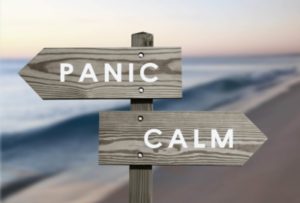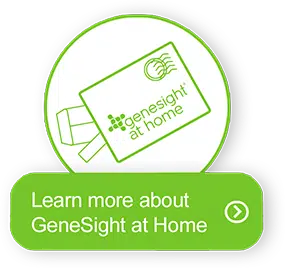The title character from Apple TV+’s Ted Lasso is upbeat, positive, and happy-go-lucky. He loves a good pun. He is supportive of his friends and radiates kindness.
He also suffers from debilitating panic attacks.
A panic attack hits him while he’s enjoying a night at a karaoke bar with his team and colleagues.
“Picture Editor Melissa McCoy did a wonderful job of assembling the visual sequence that follows Ted succumbing to the attack, leaving the club, and collapsing into an almost-fetal position on the ground, and then being brought out of it by Rebecca,” Brent Findley, the show’s supervising sound editor, tells Forbes Magazine. “The full experience is brought to life by the sonic elements accompanying the picture, landing it as being from Ted’s point of view…the audience experiences what Ted is experiencing in his mind.”
At the start of the panic attack, the audience sees Ted clenching and unclenching his fist, almost like he’s trying to get feeling back into them. The audio goes quiet, you hear ringing – and the loud beat of the music in the club fades into the background as you hear Ted gasping for breath. Everything and everyone around him becomes blurry as he gets tunnel vision and flees the club.
The Ted Lasso character isn’t alone. “Every year, up to 11% of Americans experience a panic attack,” according to the Cleveland Clinic.
If you’ve never had a panic attack, you might think they are not a big deal. But if one hits you seemingly out of the blue – and your body starts to experience real, incapacitating physical and emotional symptoms – it can be terrifying.
So, what’s really happening to someone who’s having one?
Setting the scene
Tessa Miller, a writer for SELF magazine, describes her first panic attack like this:
“When I was 24, I lived alone in a tiny studio apartment on a quiet block in Brooklyn, NY. I was sitting at my desk working on my laptop, like I did every day, when my heart started thumping. I could hear blood passing through my ears – thump, thump, thump – and see my chest moving up and down under two layers of clothing. I noticed my hands trembling over the keyboard, and my vision became blurry when I looked at the computer screen.
Suddenly, I was hot and sweaty, so hot and sweaty that I stripped off my sweatshirt and went to run my face under cold water. But as I stood up to go to the sink, the hand trembling traveled down into my arms and legs, leaving me unsteady on my feet. My heart seemed to pound even faster, even harder. I tried taking a deep breath to calm myself, but my breaths were sharp and shallow. My vision got darker and narrower and looked kaleidoscopic, like when you close your eyes and press down on your eyelids to ‘see stars.’
‘You’re dying,’ a voice in my head said. ‘This is what death feels like, and you’re going to die alone.’
And then, I slowly sank to the floor. I don’t know how much time passed before I was able to get up and steady myself – it could have been 30 seconds or an hour. I crawled from the floor to the bed and slept for 13 hours straight, as though the life had been drained right out of me.”
Signs of a panic attack
“A panic attack is a sudden episode of intense fear that triggers severe physical reactions when there is no real danger or apparent cause,” according the Mayo Clinic. Often there’s no specific trigger or warning that a panic attack is coming – you could just be going about your daily business or even sleeping when one begins.
According to Mayo Clinic, typical signs and symptoms for panic attacks could include:
- “Sense of impending doom or danger
- Fear of loss of control or death
- Rapid, pounding heart rate
- Sweating
- Trembling or shaking
- Shortness of breath or tightness in your throat
- Chills
- Hot flashes
- Nausea
- Abdominal cramping
- Chest pain
- Headache
- Dizziness, lightheadedness or faintness
- Numbness or tingling sensation
- Feeling of unreality or detachment”

According to the Anxiety and Depression Association of America (ADAA), “Panic attacks typically reach their peak level of intensity in 10 minutes or less and then begin to subside. Due to the intensity of the symptoms and their tendency to mimic those of heart disease, thyroid problems, breathing disorders, and other illnesses, people with panic disorder often make many visits to emergency rooms or doctors’ offices, convinced they have a life-threatening issue.”
Pop star Meghan Trainor, who shared her experience with panic attacks with People, made several trips to the ER for physical symptoms before her diagnosis.
“Some nights I remember I ate a bunch of food, then I got scared, and I was like, ‘I need to go to the emergency room because I’m allergic to what I just ate.’ The doctor came in, looked really sad, and was like, ‘Have you ever heard of a panic attack?’ I was like, ‘No, no, no, I’m having an allergic reaction. If you just look in the back of my throat, it’s closing.’ That was my first lesson on what a panic attack can do to you,” Trainor says.
When it could be panic disorder
If you have frequent and unexpected panic attacks, it could be related to a mental health condition called panic disorder.
“Panic disorder is diagnosed in people who experience spontaneous seemingly out-of-the-blue panic attacks and are very preoccupied with the fear of a recurring attack,” according to the ADAA website.
It isn’t uncommon. According to estimates reported on the National Institute of Mental Health website (NIMH):
- 7% of adults had panic disorder in the past year.
- Panic disorder is more than twice as common in women than in men.
- 7% of adults are estimated to experience panic disorder at some point in their lives.
The importance of a professional perspective
If you experience panic attack symptoms, it’s important to see a professional for several reasons.

“Psychotherapy, medications or a combination are very effective at stopping panic attacks. How long you’ll need treatment depends on the severity of your problem and how well you respond to treatment,” according to the Cleveland Clinic.
For Meghan Trainor, the diagnosis of panic disorder from a mental health professional and treatment with antidepressant medication and therapy helped her find “relief.”
“That medicine saved me, saved my life, saved my career,” Trainor says. “I’m back better than ever.”
Symptoms of panic disorder can feel debilitating, but you are never alone. Many people know what it feels like to suffer from panic attacks, and professionals are available to help. The first call isn’t always easy to make – but it could be worth it for your future health.
Tessa Miller in SELF reflects, “Talking about mental health can be scary, but trust me, it isn’t as scary as the feeling of a panic attack.”
To read more about this topic, please visit:
- Patient testimonial – https://genesight.com/patient-stories/the-most-expensive-medication-is-the-one-that-doesnt-work/
- The link between stress and anxiety – https://genesight.com/blog/patient/stress-and-anxiety-link/
- Best exercises for mental health – https://genesight.com/blog/patient/the-best-types-of-exercise-for-mental-health/
Our articles are for informational purposes only and are reviewed by our Medical Information team, which includes PharmDs, MDs, and PhDs. Do not make any changes to your current medications or dosing without consulting your healthcare provider.
The GeneSight test must be ordered by and used only in consultation with a healthcare provider who can prescribe medications. As with all genetic tests, the GeneSight test results have limitations and do not constitute medical advice. The test results are designed to be just one part of a larger, complete patient assessment, which would include proper diagnosis and consideration of your medical history, other medications you may be taking, your family history, and other factors.
If you are a healthcare provider and interested in learning more about the GeneSight test, please contact us at 855.891.9415. If you are a patient, please talk with your doctor to see if the GeneSight test may be helpful.







